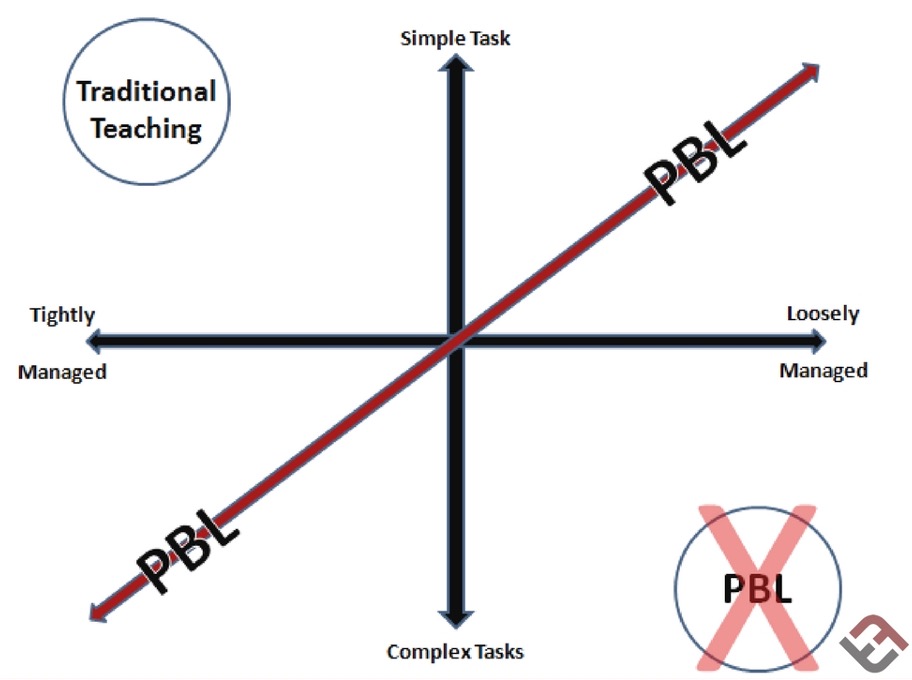Project-Based Learning Can Nurture Student Autonomy
contributed by Drew Perkins
One of the ‘5 levers’ of our project-based learning model is Autonomy, defined as “the project provides opportunities for voice and choice in the process and the product” in our project design rubric, and it is often one of the ‘scariest’ for teachers to navigate as they design and implement PBL. It makes sense, as teachers and parents we’re often hesitant to allow too much freedom and leash to our students and children for fear something terrible may happen.
While that’s certainly a possibility, especially if we’re not thoughtful and perceptive about the limits of what they can handle, the reality is that by not allowing our students and children opportunities for autonomy and independence we’re doing them a disservice, and in some cases limiting opportunities for academic and emotional growth.
Teachers often fall into two categories when we discuss autonomy. Some see that as part of our project design rubric and model and feel they’re supposed to turn that knob up to 11, any limits on student autonomy are a failing on the part of the teacher. That’s simply not true, there are of course plenty of times and ways in which you’ll want to more tightly manage students and your classroom.
Other teachers (and critics of PBL) are uncomfortable with ceding ‘control’ for fear their classrooms will become something like what I jokingly call ‘Free Range Chicken.’ In this scenario, students might very well be metaphorically wandering about with no real guidance on their academic and cognitive path. That’s only not effective PBL, that’s not good teaching.

We use the image above to help illustrate that the amount of autonomy we want to provide is dependent upon the complexity of the task. If we want to more loosely manage students then the task should be less complex and conversely, if the task is more complex we’ll need to more tightly manage them.
PBL is a great tool for helping students grow through autonomy and independence but certainly not the only option. With the more than concerning uptick in anxiety and social-emotional issues in our schools, Let Grow’s school and community programs are wonderful–and free-antidotes. The Let Grow Project and Let Grow Play are both free and easy ways to engage your students and/or school in ways that can help them build the kinds of self-efficacy and growth mindset that lessen anxiety and increase social-emotional skills.
As a parent, I can personally attest to the power of these exercises and activities. In preparation for my podcast with Lenore Skenazy, I was struck by one of the ideas in her book, Free Range Kids, so I tried it. You can read more about it on her blog but in short, I dropped my 12 and 14-year-old daughters off at the grocery store and waited outside while they shopped for dinner by themselves.
Their smiles and stories of problem-solving and overcoming mild anxiety were evidence of how potent these can be and since then each daughter has done the dinner shopping activity solo and continue to request more such trips. While I won’t pretend that these alone will make your children emotionally healthy, I’ve seen an immediate boost in self-efficacy and actual behaviors that were once seemingly necessary coping mechanisms.
No doubt, letting go of the reins of control as an educator (or parent) can be a little scary. Taking advantage of Vygotsky’s zone of proximal development we want to identify that line of productive struggle that will provide a challenge but not produce cognitive or emotional shutdown. As a teacher we want to be sure that students are learning and thinking about the things we want or need them to and providing too much autonomy can result in that not happening. As a parent or school administrator testing the waters and creating a culture of increased independence ‘Let Grow’ type projects and programs are an excellent gateway into helping children manage themselves.
Finding ways in which students can be successful, especially when it’s outside of their (and sometimes your) comfort level can not only bring academic results but the social-emotional growth necessary for happy and healthy humans.